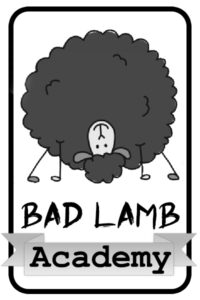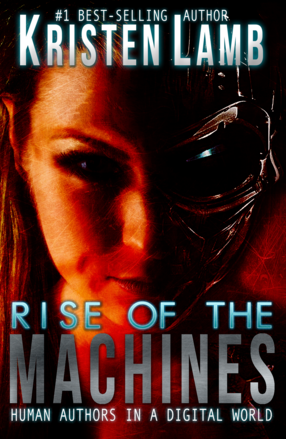Last week we discussed a logical fallacy that can easily trip up any writer. For those who might be new to this discussion and have slept since school, a logical fallacy is an argument that mistakenly seeks to establish a causal connection when dissimilar objects or events are compared as if the same.
All apples are fruits. An orange is a fruit therefore all oranges are apples.
Today, we are going to examine another inductive fallacy–Pitfall #2–that can cripple an aspiring novelist.
All villains are antagonists, therefore all antagonists are villains.
Uh…no.
The antagonist seems to be a real sticky wicket, especially for new writers. Hey, I’ve been there. It is easy to see how there could be confusion. Villains make no bones about the mischief and mayhem they seek to create. Nobody doubted who the bad guy was in The Dark Knight. Joker will live on in infamy as one of the greatest arch-villains in movie history.
Yet, villains are only one kind of antagonist. So if the antagonist isn’t merely a villain, who is he?
The antagonist is merely whoever drives the conflict.
In fact, I said something rather daring the other day. All stories are the antag’s story. Why? Because without the antagonist, there is no story. The protagonist’s happy joy-joy life would go on as normal. If there is no problem, then there is no need for our hero to rise to the occasion. The antagonist represents this dire change that must be set right by the end of the book.
Without Darth Vader, no one would have cared about Luke Skywalker.
Antagonists are tremendously complex, and thus, in my opinion, the most interesting. And just to make this clear, for the most part your antagonist will be corporeal. Even if the overall antagonist is disease, nature, war, weather, the antagonist will almost always be represented by a proxy. Humans tend to be concrete thinkers, so tangible antagonists generally work best. But, just because you have a human antagonist, does not mean this person will always be evil.
One of my favorite examples is the movie Steele Magnolias. Who is the antagonist? Well, the real antagonist is Disease (diabetes)/Death. Who is the proxy? The daughter, Shelby. She represents the antagonist and drives the main conflict of the story.
How?
M’Lynn, Shelby’s mother, is the protagonist. What is her goal? For her daughter to live a long and happy life and die of old age, after M’Lynn is long gone.
Shelby, however, decides to get pregnant despite the health risks. It is her decision to get pregnant and have a baby that changes M’Lynn’s life (and the life of all the women around her) forever. If Shelby had adopted a child, instead, then there would have been no problem, ergo no story. Shelby is the definitive antagonist, but hardly a villain.
Another great example is the made for TV movie Amish Grace, based on the tragic shooting of ten Amish children in a Nickel Mines, Pennsylvania schoolhouse in October of 2006. The overall antagonist is the dead gunman. It is his decision to commit murder-suicide that changes everything and sets the course of events in motion.
Yet, he is not truly the antagonist that drives the story. Rather, it is the grieving mother, Ida Graber, who takes over the antagonist’s role. The rest of the Amish community including her husband, choose to forgive the gunman who murdered their children. Ida, however, cannot bring herself to forgive, and this decision propels her to question everything that she believes in.
How is Ida the antagonist? The story after the shooting is about love’s ability to conquer tragedy. If Ida forgives the gunman in act one, we would have no story. Yet, it is this push and pull between husband and wife, community and grieving mother, that drives the conflict of the story. Will she forgive and allow the community to heal? Or will rage and grief rip her from the only life she’s ever known?
Villains are wonderful and should be used when the story you wish to tell calls for one. Never underestimate the sheer awesomeness of a serial killer or ninja :D. But it is wise to learn about the antagonist in all her forms, so as to be better equipped to slate the right antag for your story. Remember, no antagonist means no story.
And this business with “she is her own worst enemy” is cheating more often than not. Why? Your protagonist must have a final battle against the antagonist, and having a main character battling herself is tough to pull off. Also, if you make your antag and protag the same person, it is harder for the audience to rally in support of the protag. You risk making a highly unlikeable hero/heroine that turns the reader off.
I highly recommend a book called, Bullies, Bastards and Bitches by Jessica Morrell. She does an excellent job of explaining the seemingly innumerable faces of the antagonist. Additionally, I recommend The Sociopath Next Door by Dr. Martha Stout PhD. I also have an earlier blog about the antagonist that might offer some additional clarification. We should seek to learn all we can, because the better we understand this vital character, the better stories we are able to craft.
Who are some of your favorite antagonists of all time? Any kind of antagonist (even villains). They can be from either movies or fiction. What do you think made them so memorable? Let’s compare notes.
I’ll start. One of my favorites? The Vampire…Lestat. Talk about a multi-faceted villain, and at times even a sympathetic antagonist. My conflicting feelings toward this character made him utterly fascinating.
***************************************************
Additional resources:
If you haven’t bought September’s Writer’s Digest’s Big Ten Issue, buy one today. An amazing collection of articles guaranteed to improve your skills.
Here’s a great blog by Candace Haven’s on the Genreality Blog–Revision Hell
Jody Hedlund has a great blog about querying–how do you know when you’re ready?
New agent and maybe a new opportunity. Chuck Sambuchino’s Guide to Literary Agents.
Want a serious belly laugh? Agent Rachelle Garder definitely has a career in comedy if the whole agent thing doesn’t work out. Your Questions Sweetly Answered is…hysterical. Also Tawna Fenske’s blog is guaranteed to make you laugh.
Want to take your career to the next level? I highly recommend Bob Mayer’s Warrior Writer Workshops. Bob even offers an on-line version, so there is no reason not to sign up today! 😀
Finally, it is never too soon to start building your platform. A blog of a facebook page is not enough to make an agent take you seriously. My book We Are Not Alone–The Writer’s Guide to Social Media is a fun, effective way to start building your readership today…and have fun doing it.









1 comment
Thought-provoking post. The best antagonists push the hero’s buttons and, like Luke and Darth, start the story rolling.
Favourite antagonists? Let me vote for Lionel Shriver’s Kevin because someone else certainly will otherwise!